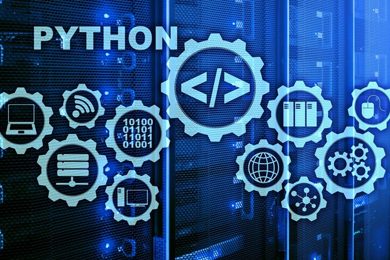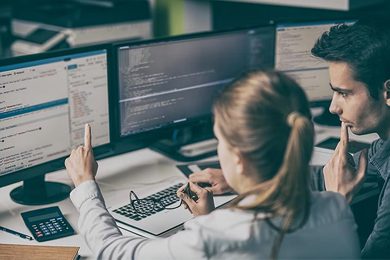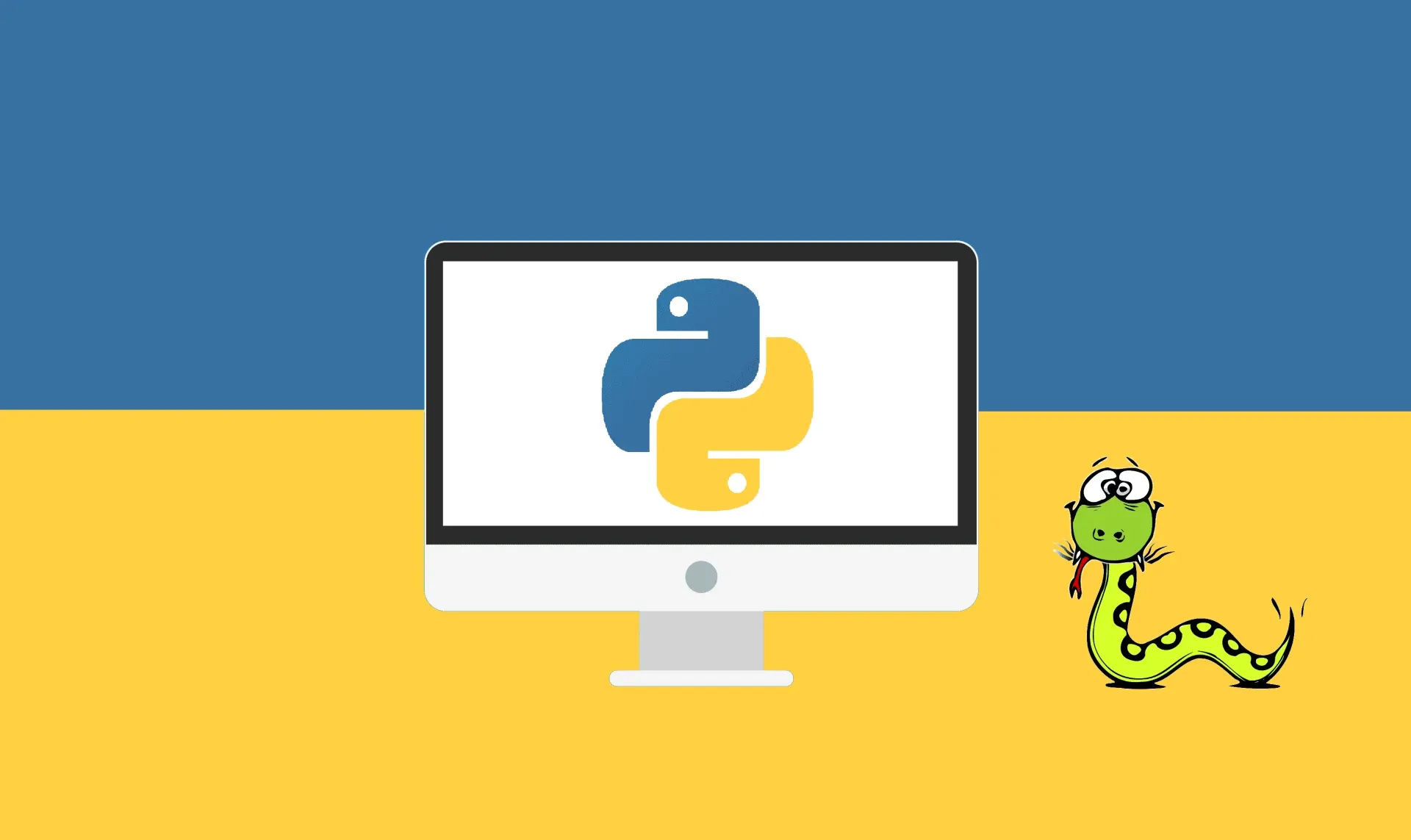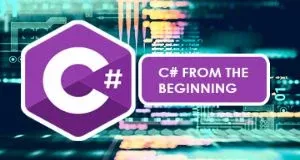This plan includes
- Limited free courses access
- Play & Pause Course Videos
- Video Recorded Lectures
- Learn on Mobile/PC/Tablet
- Quizzes and Real Projects
- Lifetime Course Certificate
- Email & Chat Support
What you'll learn?
- Fundamentals of Signals and Image Processing.
- Analog to digital conversion.
- Sampling and Reconstruction.
- Nyquist Theorem.
- Convolution for Signal and Images.
- Signal and Image denoising.
- Fourier transform of Signals and Images.
- Signal filtering by FIR and IIR filters.
- Image Filtering in Spatial and Frequency Domain
- Wavelet Transform for Signal and Images.
- Histogram Processing
- Arithmetic, Logic and Point Level Operations on Images
- implementation of all Signal and Image Processing Algorithms in Python
- Google Colab for Python Programming
Course Overview
This course will bridge the gap between the theory and implementation of Signal and Image Processing Algorithms and their implementation in Python. All the lecture slides and python codes are provided.
Why Signal Processing?
Since the availability of digital computers in the 1970s, digital signal processing has found its way in all sections of engineering and sciences.
Signal processing is the manipulation of the basic nature of a signal to get the desired shaping of the signal at the output. It is concerned with the representation of signals by a sequence of numbers or symbols and the processing of these signals.
Following areas of sciences and engineering are specially benefitted by rapid growth and advancement in signal processing techniques.
1. Machine Learning.
2. Data Analysis.
3. Computer Vision.
4. Image Processing
5. Communication Systems.
6. Power Electronics.
7. Probability and Statistics.
8. Time Series Analysis.
9. Finance
10. Decision Theory
Why Image Processing?
Image Processing has found its applications in numerous fields of Engineering and Sciences.
Few of them are the following.
1. Deep Learning
2. Computer Vision
3. Medical Imaging
4. Radar Engineering
5. Robotics
6. Computer Graphics
7. Face detection
8. Remote Sensing
9. Agriculture and food industry
Course Outline
Section 01: Introduction of the course
Section 02: Python crash course
Section 03: Fundamentals of Signal Processing
Section 04: Convolution
Section 05: Signal Denoising
Section 06: Complex Numbers
Section 07: Fourier Transform
Section 08: FIR Filter Design
Section 09: IIR Filter Design
Section 10: Introduction to Google Colab
Section 11: Wavelet Transform of a Signal
Section 12: Fundamentals of Image Processing
Section 13: Fundamentals of Image Processing With NumPy and Matplotlib
Section 14: Fundamentals of Image Processing with OpenCV
Section 15: Arithmetic and Logic Operations with Images
Section 16: Geometric Operations with Images
Section 17: Point Level OR Gray level Transformation
Section 18: Histogram Processing
Section 19: Spatial Domain Filtering
Section 20: Frequency Domain Filtering
Section 21: Morphological Processing
Section 22: Wavelet Transform of Images
Pre-requisites
- Gmail Account ( For Google Colab )
Target Audience
- Anyone who wants to learn Signal and Image Processing from scratch using Python.
- Anyone who wants to work in Signal and Image Processing area.
- Those students who know the Maths of Signal and Image Processing but don't know how to implement with Python.
- Students who want to learn data and Time series filtering, Image filtering, Image manipulation and different Image Processing techniques.
- Students who want to learn data and Time series filtering, Image filtering, Image manipulation and different Image Processing techniques.
Curriculum 181 Lectures 22:54:05
Section 1 : Introduction
- Lecture 2 :
- Course Material
Section 2 : Python Crash Course
- Lecture 1 :
- Introduction of the Section
- Lecture 2 :
- Installing Python Packages- Part01
- Lecture 3 :
- Installing Python Packages- Part02
- Lecture 4 :
- Introduction of Jupyter Notebook
- Lecture 5 :
- Arithmetic With Python Part-01
- Lecture 6 :
- Arithmetic With Python Part-02
- Lecture 7 :
- Arithmetic With Python Part-03
- Lecture 8 :
- Dealing With Arrays Part-01
- Lecture 9 :
- Dealing With Arrays Part-02
- Lecture 10 :
- Dealing With Arrays Part-03
- Lecture 11 :
- Plotting and Visualization Part-01
- Lecture 12 :
- Plotting and Visualization Part-02
- Lecture 13 :
- Plotting and Visualization Part-03
- Lecture 14 :
- Plotting and Visualization Part-04
- Lecture 15 :
- Lists In Python
- Lecture 16 :
- For Loops Part-01
- Lecture 17 :
- For Loops Part-02
Section 3 : Fundamentals of Signal Processing
- Lecture 1 :
- Introduction of the Section
- Lecture 2 :
- Basic Elements of Signal Processing System
- Lecture 3 :
- Analog to Digital Conversion
- Lecture 4 :
- Analog to Digital Conversion With Python
- Lecture 5 :
- Coding the Quantized Signal
- Lecture 6 :
- Fundamentals of Continuous Time Signal
- Lecture 7 :
- Continuous Time Signals In Python
- Lecture 8 :
- Fundamentals of Discrete Time Signal
- Lecture 9 :
- Discrete Time Signals In Python
- Lecture 10 :
- Sampling and Reconstruction
- Lecture 11 :
- Sampling and Reconstruction in Python
Section 4 : Convolution
- Lecture 1 :
- Introduction of the Section
- Lecture 2 :
- The Convolution Sum
- Lecture 3 :
- Numerical Example on Convolution
- Lecture 4 :
- Convolution Using For Loops In Python
- Lecture 5 :
- Convolution Using NumPy
- Lecture 6 :
- Signal Denoising By Convolution
- Lecture 7 :
- Edge Detection By Convolution
- Lecture 8 :
- The Convolution Theorem
- Lecture 9 :
- Full Mode Convolution
Section 5 : Signal Denoising
- Lecture 1 :
- Introduction of the Section
- Lecture 2 :
- Signal Denoising By Moving Average Filter
- Lecture 3 :
- Implementing Moving Average Filter in Python
- Lecture 4 :
- Gaussian Mean Filter
- Lecture 5 :
- Gaussian Mean Filter In Python
- Lecture 6 :
- Median Filter
- Lecture 7 :
- Median Filter In Python
- Lecture 8 :
- Removing Spiky Noise By Median Filter
- Lecture 9 :
- Removing Spiky Noise By Median Filter in Python Part-01
- Lecture 10 :
- Removing Spiky Noise By Median Filter in Python Part-02
Section 6 : Complex Number System
- Lecture 1 :
- Introduction of Complex Number
- Lecture 2 :
- Complex Numbers in Python
- Lecture 3 :
- Mathematical Operations Part-01
- Lecture 4 :
- Mathematical Operations Part-02
- Lecture 5 :
- Mathematical Operations in Python
- Lecture 6 :
- Magnitude and Phase Calculation
- Lecture 7 :
- Magnitude and Phase Calculation In Python
- Lecture 8 :
- Complex Sine Wave
- Lecture 9 :
- Complex Sine Wave In Python
Section 7 : Fourier Transform
- Lecture 1 :
- Introduction of the Section
- Lecture 2 :
- Combining Sine and Cosine Wave
- Lecture 3 :
- Generating Waves in Python
- Lecture 4 :
- Mechanism of Fourier Transform
- Lecture 5 :
- Step By Step Coding of Fourier Transform
- Lecture 6 :
- Fast Fourier Transform
- Lecture 7 :
- Fourier Transform of Signal with DC Component
- Lecture 8 :
- Amplitude and Power Spectrum
- Lecture 9 :
- Inverse Fourier Transform
- Lecture 10 :
- Application of Fourier Transform Part-01
- Lecture 11 :
- Application of Fourier Transform Part-02
Section 8 : Finite Impulse Response ( FIR ) Filter Design
- Lecture 1 :
- Introduction of the Section
- Lecture 2 :
- Introduction of Digital Filters
- Lecture 3 :
- Steps of Designing FIR Filters
- Lecture 4 :
- FIR Filter Design by Least Square Method
- Lecture 5 :
- FIR Filter Design by Window Method
- Lecture 6 :
- FIR Zero Shift Filter
- Lecture 7 :
- Low Pass FIR Filter
- Lecture 8 :
- Low Pass FIR Filter In Python
- Lecture 9 :
- High Pass FIR Filter
- Lecture 10 :
- High Pass FIR Filter In Python
- Lecture 11 :
- Band Pass Filter
- Lecture 12 :
- Band Pass Filter In Python
- Lecture 13 :
- Task for Students
Section 9 : Infinite Impulse Response ( IIR ) Filter Design
- Lecture 1 :
- Introduction of the Section
- Lecture 2 :
- Introduction of IIR Filters
- Lecture 3 :
- IIR Butterworth Filter Design in Python
- Lecture 4 :
- Low Pass IIR Filter
- Lecture 5 :
- High Pass IIR Filter
- Lecture 6 :
- Band Pass IIR Filter
- Lecture 7 :
- Comparison Between FIR and IIR Filter
- Lecture 8 :
- Task for Students
Section 10 : Introduction to Google Colab
- Lecture 1 :
- Introduction of the Section
- Lecture 2 :
- Python Coding in Colab Part-01
- Lecture 3 :
- Python Coding in Colab Part-02
- Lecture 4 :
- Python Coding in Colab Part-03
Section 11 : Wavelet Transform of Signals
- Lecture 1 :
- Introduction of the Section
- Lecture 2 :
- Limitations of Fourier Transform
- Lecture 3 :
- Why Wavelet Transform
- Lecture 4 :
- Wavelet Families
- Lecture 5 :
- Filter Banks of Discrete Wavelets
- Lecture 6 :
- Single Level Decomposition
- Lecture 7 :
- Single Level Decomposition With Python
- Lecture 8 :
- Multilevel Decomposition
- Lecture 9 :
- Multilevel Decomposition In Python
- Lecture 10 :
- Time Frequency Analysis
- Lecture 11 :
- Time Frequency Analysis In Python
Section 12 : Fundamentals of Image Processing
- Lecture 1 :
- Introduction of the Section
- Lecture 2 :
- Concept of an Image
- Lecture 3 :
- How Computers See the Image
- Lecture 4 :
- Digital Image Processing
Section 13 : Image Fundamentals With NumPy and Matplotlib
- Lecture 1 :
- Introduction of the Section
- Lecture 2 :
- Reading, Displaying and Saving Image
- Lecture 3 :
- Image Formats
- Lecture 4 :
- Red, Green and Blue Components of Image
Section 14 : Image Fundamentals With OpenCV
- Lecture 1 :
- Introduction of the Section
- Lecture 2 :
- Image Reading and Displaying
- Lecture 3 :
- Image Resizing and Flipping
Section 15 : Arithmetic and Logic Operations on Images
- Lecture 1 :
- Introduction of the Section
- Lecture 2 :
- Arithmetic Operations
- Lecture 3 :
- Arithmetic Operations With Python
- Lecture 4 :
- Logical Operations
- Lecture 5 :
- Logical Operations With Python
Section 16 : Geometric Operations
- Lecture 1 :
- Introduction of the Section
- Lecture 2 :
- Translation, Rotation and Affine Transformation
- Lecture 3 :
- Translation, Rotation and Affine Transformation With Python
- Lecture 4 :
- Scaling, Zooming, Shrinking and Cropping
Section 17 : Gray Level and Point Transformations
- Lecture 1 :
- Introduction of the Section
- Lecture 2 :
- Negative Point Transformation
- Lecture 3 :
- Negative Point Transformation With Python
- Lecture 4 :
- Log Transformation
- Lecture 5 :
- Log Transformation With Python
- Lecture 6 :
- Gamma Transformation
- Lecture 7 :
- Gamma Transformation With Python
- Lecture 8 :
- Auto-contrast and Piece-wise linear contrast function
- Lecture 9 :
- Contrast Functions With Python
Section 18 : Histogram Processing
- Lecture 1 :
- Introduction of the Section
- Lecture 2 :
- Histogram of an Image
- Lecture 3 :
- Histogram of Image With Python Part-01
- Lecture 4 :
- Histogram of Image With Python Part-02
- Lecture 5 :
- Histogram Equalization With Numerical Example
- Lecture 6 :
- Histogram Equalization With Python
Section 19 : Spatial Domain Filtering
- Lecture 1 :
- Introduction of the Section
- Lecture 2 :
- Neighborhood Processing
- Lecture 3 :
- 2D Convolution With Numerical Example
- Lecture 4 :
- 2D Convolution With Python
- Lecture 5 :
- Applications of 2D Convolution
- Lecture 6 :
- Applications of 2D Convolution With Python
- Lecture 7 :
- Mean Filter
- Lecture 8 :
- Mean Filter With Python
- Lecture 9 :
- Gaussian Filter
- Lecture 10 :
- Gaussian Filter With Python
- Lecture 11 :
- Median Filter
- Lecture 12 :
- Median Filter With Python
- Lecture 13 :
- The Laplacian
- Lecture 14 :
- Laplacian Filtering With Python
- Lecture 15 :
- High boost filter
- Lecture 16 :
- High boost filter With Python
- Lecture 17 :
- Sobel Filters
- Lecture 18 :
- Sobel Filters in Python
- Lecture 19 :
- Canny Edge Detection
- Lecture 20 :
- Canny Edge Detection With Python
Section 20 : Frequency Domain Filtering
- Lecture 1 :
- Introduction of the Section
- Lecture 2 :
- 2D Fourier Transform
- Lecture 3 :
- 2D Fourier Transform With Python
- Lecture 4 :
- Low Pass and High Pass Filters
- Lecture 5 :
- Low Pass and High Pass Filters With Python
- Lecture 6 :
- High Boost and Other Filters
- Lecture 7 :
- Fourier Transform of High Boost Filter
Section 21 : Morphological Processing
- Lecture 1 :
- Introduction of the Section
- Lecture 2 :
- Dilation and Erosion
- Lecture 3 :
- Dilation and Erosion With Python
- Lecture 4 :
- Morphological Filtering
- Lecture 5 :
- Morphological Filtering With Python
- Lecture 6 :
- Image Gradient Using Morphology
- Lecture 7 :
- Morphological Gradient With Python
Section 22 : Wavelet Transform for Images
- Lecture 1 :
- Introduction of the Section
- Lecture 2 :
- Single Level Decomposition and Reconstruction
- Lecture 3 :
- Single Level Decomposition and Reconstruction With Python
- Lecture 4 :
- Multilevel Decomposition and Reconstruction
- Lecture 5 :
- Multilevel Decomposition and Reconstruction With Python
- Lecture 6 :
- Image denoising using Wavelet Transform
- Lecture 7 :
- Image denoising using Wavelet Transform With Python
Our learners work at
Frequently Asked Questions
How do i access the course after purchase?
It's simple. When you sign up, you'll immediately have unlimited viewing of thousands of expert courses, paths to guide your learning, tools to measure your skills and hands-on resources like exercise files. There’s no limit on what you can learn and you can cancel at any time.Are these video based online self-learning courses?
Yes. All of the courses comes with online video based lectures created by certified instructors. Instructors have crafted these courses with a blend of high quality interactive videos, lectures, quizzes & real world projects to give you an indepth knowledge about the topic.Can i play & pause the course as per my convenience?
Yes absolutely & thats one of the advantage of self-paced courses. You can anytime pause or resume the course & come back & forth from one lecture to another lecture, play the videos mulitple times & so on.How do i contact the instructor for any doubts or questions?
Most of these courses have general questions & answers already covered within the course lectures. However, if you need any further help from the instructor, you can use the inbuilt Chat with Instructor option to send a message to an instructor & they will reply you within 24 hours. You can ask as many questions as you want.Do i need a pc to access the course or can i do it on mobile & tablet as well?
Brilliant question? Isn't it? You can access the courses on any device like PC, Mobile, Tablet & even on a smart tv. For mobile & a tablet you can download the Learnfly android or an iOS app. If mobile app is not available in your country, you can access the course directly by visting our website, its fully mobile friendly.Do i get any certificate for the courses?
Yes. Once you complete any course on our platform along with provided assessments by the instructor, you will be eligble to get certificate of course completion.
For how long can i access my course on the platform?
You require an active subscription to access courses on our platform. If your subscription is active, you can access any course on our platform with no restrictions.Is there any free trial?
Currently, we do not offer any free trial.Can i cancel anytime?
Yes, you can cancel your subscription at any time. Your subscription will auto-renew until you cancel, but why would you want to?
Instructor

4634 Course Views
4 Courses



 Tech & IT
Tech & IT
 Business
Business
 Coding & Developer
Coding & Developer
 Finance & Accounting
Finance & Accounting
 Academics
Academics
 Office Applications
Office Applications
 Art & Design
Art & Design
 Marketing
Marketing
 Health & Wellness
Health & Wellness
 Sounds & Music
Sounds & Music
 Lifestyle
Lifestyle
 Photography
Photography




















